How to Load and Unload a Revolver
Tags: NRA Women, Revolver, Safety, Ammunition
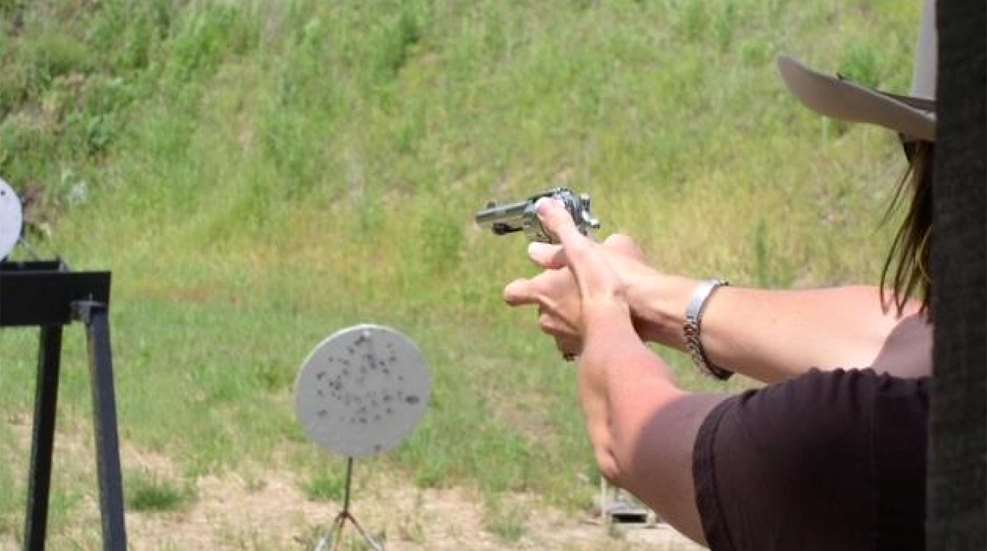
How to Load and Unload a Revolver – NRA Women.com
Knowing how to efficiently reload your revolver is essential for proper function and successful training.
Revolvers are loaded by filling the cylinder of the firearm with cartridges. Revolver cylinder ammunition capacities can vary from gun to gun, and caliber to caliber. Revolvers are sometimes referred to as “six shooters.” This is because the most common cylinder capacity is six cartridges. I have seen .22 revolvers hold as many as twelve cartridges. Smith & Wesson makes an 8-shot .357 Mag. for those who prefer a “hand-cannon” for self-defense or target shooting. There are also five-shot revolvers, which are usually very large-frame revolvers chambered for .460 S&W Magnums or .500 S&W Magnums. There are also smaller five-shot concealment revolvers chambered in .38 Spls, .357 Mags., .41 Mags. and even .44 Mags.
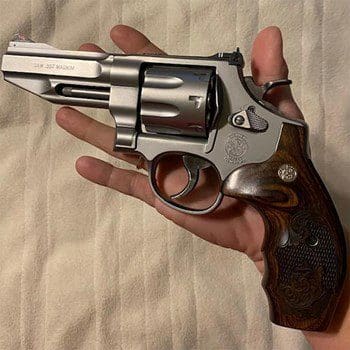
Before you can load or reload a revolver, you must first determine if you have a single-action or double-action firearm. This is because single-action and double-action revolvers are loaded differently. Check and double-check to ensure that your firearm is completely unloaded. Also make sure that there are no live rounds in the area. When you are sure that your revolver is unloaded, with the hammer in the un-cocked position, point the muzzle in a safe direction and then squeeze the trigger. If the hammer does not move, you have a single-action revolver. If the hammer moves toward the rear in the cocked position, you have a double-action revolver.
Single-Action Revolvers
A single-action revolver is loaded through the loading gate on the side of the frame, toward the rear of the cylinder. The loading gate is swung outward to the open position exposing the holes in the cylinder. These holes are called “charge holes” or “chambers.” You can load only one cartridge at a time through the loading gate. Each time a cartridge is inserted, the cylinder must be rotated to expose another empty chamber. Repeat this process until all the chambers are filled with a live round. On some single-action revolvers, to disengage the cylinder gears so that the cylinder can be rotated, you must pull the hammer about halfway towards the rear, rotate the cylinder, easily let the hammer back down, and then insert a live round. Repeat this step until each chamber is loaded.
To unload a single-action revolver, regardless if you are unloading spent casings or live rounds, you must use the extractor rod, or plunger, under the barrel. With the firearm pointed in a save direction, open the loading gate. Rotate the cylinder until the head of the cartridge is centered in the opening and lined up with the extractor rod. The extended part of the extractor rod is then pushed towards the rear of the firearm. The extractor rod then pushed the spent case or live round out of the cylinder. You must do this for each chamber to completely unload the revolver.
Double-Action Revolvers
Loading or unloading a double-action revolver can be quicker than a single-action revolver. To load a double-action revolver, you must depress the cylinder release button. The cylinder release is usually pushed toward the cylinder and located on the left side of the frame at the rear of the cylinder. The cylinder can now be swung out through the frame to the left side of the gun and loaded. This can be done one cartridge at a time, two cartridges at a time or all the cartridges at once using a loading device.
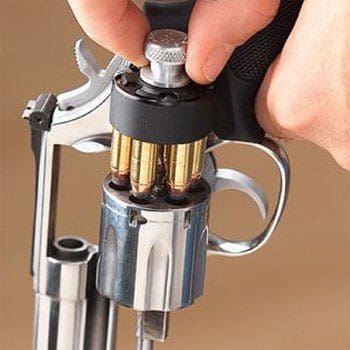
Many double-action revolver shooters use devices such as speed loaders and moon clips in speeding up the loading process. Speed loaders hold six or eight cartridges, depending on the cylinder capacity. This type of device holds all the cartridges needed to fill the cylinder. The cartridges are held by the base or head. When the cylinder is open, the speed loader is held by the shooter’s fingertips, and the cartridges are inserted in all the chambers simultaneously, bullets first. There are manually operated speed loaders and auto-release speed loaders. When using manually operated speed loaders, the knob on the end is turned a ¼ turn to release the cartridges. When using auto-release speed loaders, the cartridges are automatically released when the speed loader comes in contact with the cylinder’s extractor star.
Moon clips come in either full or half-moon clips, which are very thin pieces of metal that hold the cartridges at the rim. Moon clips can only be used in loading cartridges in cylinders that have been milled out to accept the device. Full moon clips hold all the cartridges needed to fill the revolver’s cylinder. Half-moon clips hold half of the cylinder’s capacity, usually three rounds. Unlike speed loaders, moon clips stay in the firearm with the cartridges.
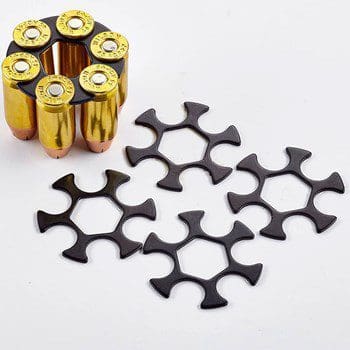
Once the cylinder chambers are loaded, either by hand, speed loaders or moon clips, the cylinder is now ready to close. The proper way of closing a revolver’s cylinder, is to depress the cylinder release and rotate the cylinder into place, in the frame. This prevents damage to the cylinder or the rotating gears. The cylinder should never be slammed shut.
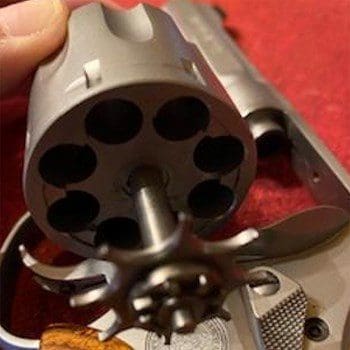
To unload a double-action revolver, either spent casings or live rounds, press the cylinder release and it will swing open towards the left side of the firearm. Then rotate the muzzle of the gun upward with the cylinder open. While the strong hand is holding the revolver, pointed upward in a safe direction, use your reaction hand to remove the spent or live cartridges. This is accomplished by taking the reaction hand, fingers together and palm down and pushing the extractor rod toward the rear of the cylinder. When the extractor is pushed, the extractor star pushes against the rim of the cartridges, forcing them out of the cylinder. If moon clips are used, the spent casings or live rounds come out in one piece. To reload the moon clips, the spent casings must be removed from the clips and live rounds are inserted.
Loading and unloading revolvers quickly is not as difficult as it seems. There are definitely more steps to loading or unloading a revolver than there are steps with a semi-automatic pistol, but it can be done just as quickly. This is where practice comes in. Game wardens used to carry large revolvers, but they now carry service pistol. For years I have watched Texas game wardens qualify with their duty handguns. I can attest that those early game wardens could load and unload their service revolvers just as fast as officers now with semi-automatic pistols. It is all about training and practice!
